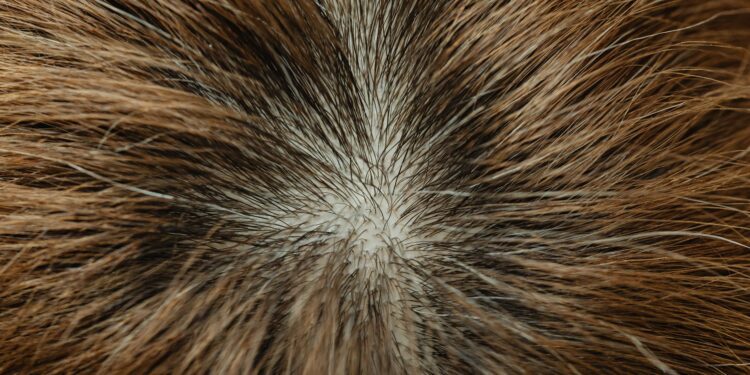Introduction:
The hair growth cycle consists of three main phases: anagen, catagen, and telogen. During the anagen phase, hair actively grows for a period of 2-7 years. The catagen phase is a transitional stage where hair growth stops and the hair follicle shrinks. Finally, in the telogen phase, the hair rests for about 2-4 months before falling out and the cycle begins again. Understanding this cycle is crucial for maintaining healthy hair because disruptions or imbalances in the cycle can lead to hair loss, thinning, or other issues. By knowing the stages of the hair growth cycle, individuals can better care for their hair and address any potential problems early on.
Anagen Phase (Growth Phase):
The anagen phase is the active growth phase of the hair growth cycle. During this phase, the hair follicles are actively producing new hair cells, which results in the lengthening of the hair shaft. The duration of the anagen phase can vary from person to person and is influenced by various factors such as genetics, age, hormone levels, and overall health. Factors that can affect the length of the anagen phase include stress, diet, and certain medical conditions. The length of the anagen phase ultimately determines how long a person’s hair can grow before entering the telogen phase, where the hair stops growing and eventually falls out. Understanding the anagen phase and its connection to hair growth can help individuals better care for their hair and promote healthy hair growth.
Catagen Phase (Transition Phase):
The catagen phase is the second stage of the hair growth cycle, following the anagen phase and preceding the telogen phase. This phase is essential for the renewal and shedding of hair follicles. The purpose of the catagen phase is to transition the hair follicle from active growth to a resting state, preparing it for the shedding process in the telogen phase. The duration of the catagen phase typically lasts around 2-3 weeks. During this phase, the hair follicle shrinks and detaches from the blood supply, causing the hair to stop growing and eventually fall out. Understanding the significance of the catagen phase in the hair growth cycle helps in maintaining healthy and balanced hair growth.
Telogen Phase (Resting Phase):
The telogen phase is the final stage of the hair growth cycle, characterized by the resting period of the hair follicle. During this phase, the hair follicle remains inactive and does not grow. The length of the telogen phase varies from person to person, with some individuals experiencing a longer period of inactivity than others. Factors such as genetics, age, hormonal imbalances, and stress levels can influence the duration of the telogen phase. Understanding the length of the telogen phase is important in determining the overall health and growth of hair follicles, as it plays a crucial role in the hair growth cycle. It is essential to maintain a healthy lifestyle and address any underlying factors that may be affecting the length of the telogen phase to ensure optimal hair growth and health.
Exogen Phase (Shedding Phase):
The exogen phase is an important part of the hair growth cycle, where shedding is a natural process that occurs. This phase is when the old hair is released from the follicle to make way for new growth. The shedding patterns can vary from person to person, with some experiencing more frequent shedding than others. Factors such as genetics, hormonal changes, stress, and diet can all affect the shedding phase. Understanding the hair growth cycle and the exogen phase can help individuals better manage their hair health and address any concerns they may have with shedding.
What Stage is the Shortest in the Hair Growth Cycle?
Understanding the shortest phase of the hair growth cycle, known as the catagen phase, is essential for developing effective hair care routines. During this phase, the hair follicle stops growing and detaches from the blood supply, ultimately leading to the shedding of the hair strand. By understanding this phase, individuals can better tailor their hair care routines to promote healthy hair growth. For example, using products that nourish the scalp and promote hair growth during this phase can help prevent hair loss and improve the overall health of the hair. Additionally, knowing when the hair is in the catagen phase can help individuals better understand the natural shedding process and avoid unnecessary stress or concern about temporary hair loss. Overall, understanding the importance of the shortest phase in the hair growth cycle can greatly impact how individuals care for their hair and maintain its health and vitality.
Conclusion:
Understanding the hair growth cycle stages is crucial for maintaining healthy and vibrant hair. The cycle consists of three main phases: anagen (active growth), catagen (transition), and telogen (resting). Each phase plays a significant role in the overall health and appearance of our hair. During the anagen phase, hair follicles are actively producing new hair cells, which results in longer and thicker hair. It is important to adopt proper hair care practices, such as regular trims, using gentle products, and maintaining a balanced diet, to support the natural growth cycle. By taking care of our hair, we can ensure that it remains strong and healthy throughout each stage of the hair growth cycle.















